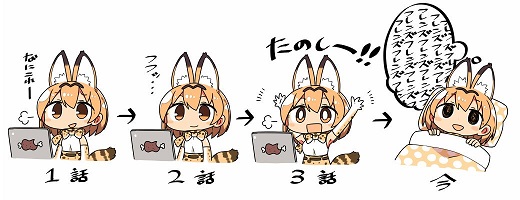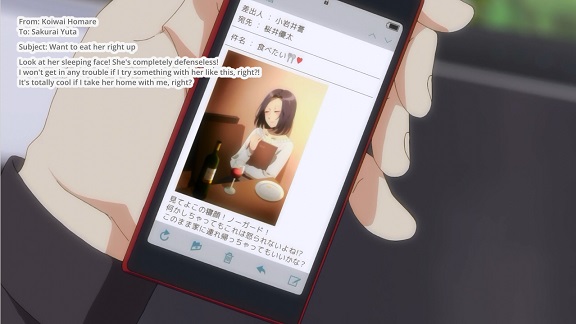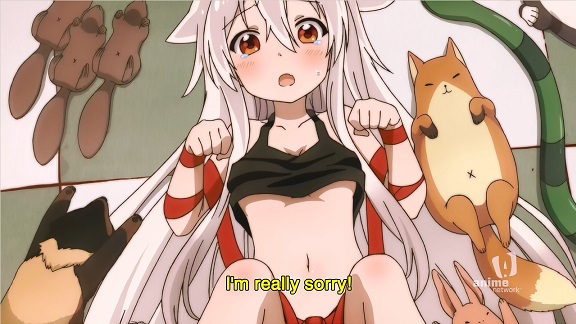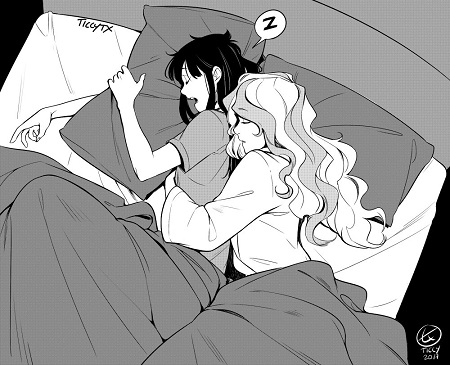2018 started with a high school girl indulging her penguin fetish.

Sora yori mo Tooi Basho was the anime of the year for me. Tamaki Mari is a very ordinary second year high school girl who one day suddenly realises that she’s a very ordinary second year high school girl. She wants a cause and finds it in Shirase, obsessed with getting to Antarctica, because that’s where her mother died three years ago. Together with Hinata, who dropped out of high school and who was looking for something interesting to do before she takes college entrance exams and Yuzuki, a child actress/idol whose company though it would be a great stunt to send her there, they do go to Antarctica. Free from the usual anime bullshit, this is by turns incredibly fucking funny and emotionally devastating, especially the penultimate episode, when Shirase comes to terms with her mother’s death.
Another early 2018 anime that left me emotionally devastated: Devilman Crybaby. That came out very early in January on Netflix. For about a week after my Twitter timeline was full of happy, queer monster girls as everybody watched and got invested in it. So on the last weekend of my holidays I sat down and watched it too and realised it was all a lie. There were no happy endings, just the bleakest depiction of humanity self destructing I’ve ever seen in anime. It took me a good solid day of happy fun slice of moe series to get my mood back up again.
Luckily there were a lot of those. Yuzu Camp was about a girl who likes to go solo camping in winter, as well as about the camping club at her local high school, who go camping together. It was all incredibly comfy and good natured and made even something as mundane as eating ramen at a campfire look epic. Mitsuboshi Colors was about three little girls getting up to mischief and was hilariously funny in how shitty these three could act. Hinamatsuri had a similar sort of energy to it, if more deadpan. It also took a right turn into the plight of the homeless in Japan halfway through, which sounds strange but worked. There was Ramen Daisuki Koizumi-san, about a girl who loves eating ramen and her friend/stalker who loves her very much. There was Slow Start, about a girl who had to skip a year between middle and high school and is terrified people might find out and Hakumei to Mikochi, two literal little women being only a few centimers tall living together in a magical world. And then there was Uma Musume: Pretty Derby about literal horse girl idols who do actual horse races followed by idol concerts. It was better than it sounds.
Comic Girls was a show about an anxiety ridden high school mangaka who on the suggestion of her editor starts living in a dorm with three other high school mangaka. Equally insecure and thirsty, Kaos was actually a thinly disguised, hopefully exaggerated version of the original manga’s creator. Most of the show was well animated, fluffy fun, but Kaos’s anxiety is handled seriously. The same goes for the attraction Kaos has for one of her dorm mates. It’s this that made comci Girls standout from the crowd of slice of moe series this year.
In 2018, both Aikatsu and Pripara revamped themselves, starting new series. Aikatsu Friends mainly followed the same formula as the original Aikatsu and Aikatsu Stars, but Kiratto Pri☆chan changed its magical idol setup for more of a Youtube idol setting. Neither were officially released here and the fansubs for the latter have been disappointing too. There was also Layton Mystery Tanteisha: Katri no Nazotoki File, a kids detective show starring the daughter of professor Layton. Venerable youkai manga Gegege no Kitarou also got a new series. But the biggest kids show remained Precure and Hug tto! Precure was one of the best entries in the franchise. Unabashedly queer, giving us the first boy precure, who was introduced as genderqueer and who had a boyfriend in the brother of one of the Cures as well as what was clearly a lesbian couple with Emiru and Lulu, as seen above. It was of course never spelled out as such but it was there.
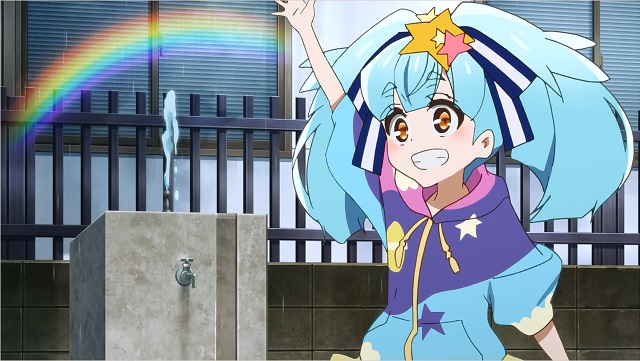
Biggest anime “controversy” of the year was about Zombieland Saga, when one of the characters, the cheerful Lily, was revealed to be trans and to have literally died of gender dysphoria. First, there were the usual rightwing assholes who insisted it was all made up by the “sjws” at Crunchyroll, which is par for the course if no less irritating for it. But then things got surreal. One particular image of Lily, with a badly photoshopped gun in her hands and the text “shut the fuck up, terfs” became widly used whenever some transphobe spouted hatred on twitter. This image then was used as evidence of how transphobes are “oppressed”, used by a transphobic SNP MP in the British Parliament!
Statistics: 183 series in my library, 131 watched. I started having trouble keeping up with seasonal anime in the latter part of the year, as I started a new assignment and just couldn’t bring myself to watch anything, let alone series I had to actually pay attention to. There are quite a few good series I still need to finish, like To Be Heroine, High Score Girl and the new FLCL sequels.
This is day ten of Twelve Days of Anime 2019. Tomorrow: 2019 is not actually over yet.
